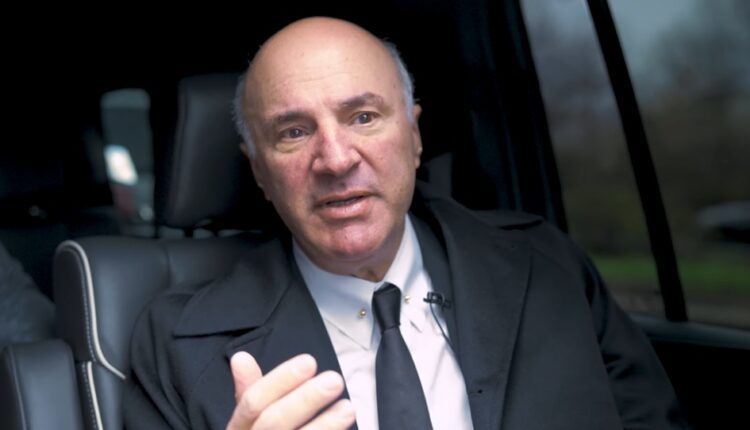
Shark Tank Investor Kevin O’Leary Warns That Energy, Food Inflation Isn’t Going Away
The U.S. stock market saw robust growth in 2023, with the S&P 500 Index surging by 17%. But according to Shark Tank star Kevin O’Leary, it’s not all sunshine and rainbows.
“The S&P 500 employs 40% of America,” he told Fox Business’ Larry Kudlow in a recent interview. “Where the cracks are starting to show is in mainstream America where the car loans have gone from five and a half percent to nine and a half percent and continue to go up.”
The U.S. Federal Reserve has implemented aggressive interest rate hikes to combat rampant inflation. As a result, many borrowers now face substantially higher loan and mortgage payments.
O’Leary noted that lending has slowed down and the cost of borrowing for small businesses has gone up.
“If you’re a regional bank right now, you’re not lending… I deal with this every day with small business. It’s not good for small business,” Kevin O’Leary said, adding that “some cracks are starting to show” in regional banks as well.
Where The War Will Be Fought
According to O’Leary, the Fed might not be done with its rate hikes because inflationary pressures still exist.
In particular, he questioned the amount of money the U.S. will print in light of the spending in the Inflation Reduction Act and the CHIPS Act.
“That money has not been deployed yet, Larry, that’s close to a trillion dollars,” he said. “Whether you think printing money helps or hurts inflation — I personally think it increases inflation — that’s why it’s staying up there.”
Moreover, the price level of many necessities remains elevated. O’Leary pointed out that energy and food inflation “just won’t go away.”
It’s not a good look politically.
“If you’re the incumbent in the White House, and you got high gas prices coming back up to four bucks, and protein, whether it’s chicken or beef or pork is going back up again, that’s not so great as you’re going into an election cycle. So that’s where the war is going to be fought,” O’Leary said.
Another reason why the Fed might continue to hike rates is the strength in the U.S. labor market. According to the latest jobs report, the unemployment rate for July was 3.5%, nearing a multi-decade low. Average hourly earnings increased 0.4% for the month.
Sign Up For The TDR Weekly Newsletter
Opportunity Ahead
High borrowing costs, coupled with persistently elevated price levels, do not bode well for the economy. But according to Kevin O’Leary, there’s a group of companies that stand to benefit from the government’s massive spending bills.
“Where is [the money] going? All into the S&P 500,” he said. “So if you’re an S&P 500 company, you’ve got clear sailing for the next three to four years.”
If you share O’Leary’s view and want to invest in the S&P 500, there are many exchange-traded funds (ETFs) that provide convenient access to the group.
For instance, the SPDR S&P 500 ETF Trust (SPY) was launched in 1993 and now has $418.8 billion in assets under management. It tracks the price and yield performance of the S&P 500 Index and has an expense ratio of 0.0945%.
Investors can also look into similar ETFs from other issuers, such as the iShares Core S&P 500 ETF (IVV) and the Vanguard S&P 500 ETF (VOO). These two funds have expense ratios of 0.03%.
To be sure, while the benchmark index showed impressive gains in 2023, it’s not always smooth sailing. Last year, the S&P 500 tumbled 19.6%.
If you don’t like that kind of volatility, you might want to look into reliable income plays outside the stock market — such as investing in rental properties with as little as $100 while staying completely hands-off.



